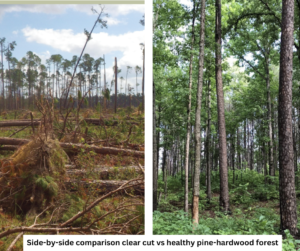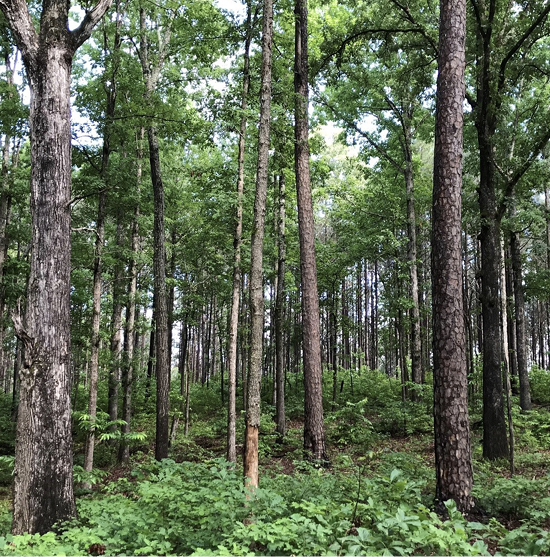Louisiana Wildlife Federation (LWF) advocates for forested lands for their economic, ecological, and recreational roles in Louisiana and has supported active reforestation as fundamental to the health of forest ecosystems.
Recently, LWF created an educational flyer outlining the benefits of mixed hardwood and pine plantings. To view the flier click HERE. This flyer was produced with the intention of reaching individuals and families whose small holdings are potential participants in reforestation programs. We want to make sure participants are aware of the alternatives to loblolly and the economic risks in the assumption that loblolly will produce the best financial returns. The Louisiana Department of Agriculture and Forestry (LDAF) provides this flyer, along with additional information, and application forms to landowners inquiring about the reforestation program and to foresters who work with landowners who’ve harvested their acreage.
LWF’s 2021 resolution seeking more wildlife-friendly results from the State reforestation program was the catalyst for this pamphlet. This program, administered by LDAF, contributes about half the typical cost of replanting clear cut land to interested landowners. LWF noticed that the current reforestation program was mainly producing loblolly trees planted in rows (pine monocultures) that were treated heavily with herbicides to kill hardwood trees and potential understory plants. Loblolly is inferior to mixed forests for wildlife habitat during the 25-year period it takes to reach sawtimber size, so monocultures can potentially limit outdoor recreation and the recovery of threatened and endangered forest wildlife species on replanted land. Along with reduced habitat, declining demand for pine sawtimber and pulp and consequent mill closures have resulted in an overabundance of pine on the landscape and twenty years of low commodity market prices. Despite the negative impacts that planting exclusively loblolly pines can have on both landowners and wildlife, the program remains 90-95% loblolly plantings. In providing this flyer, Louisiana Wildlife Federation hopes to reach landowners interested in creating healthy, economically productive wildlife habitats through reforestation.



